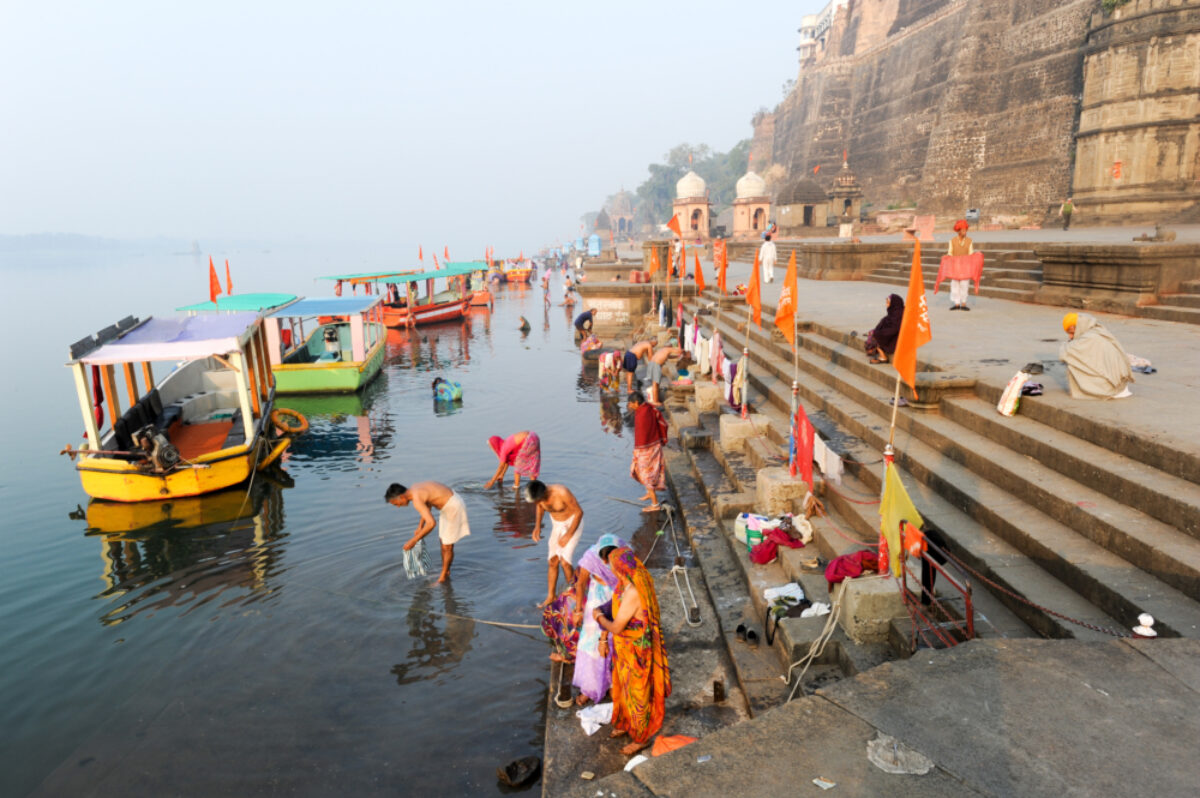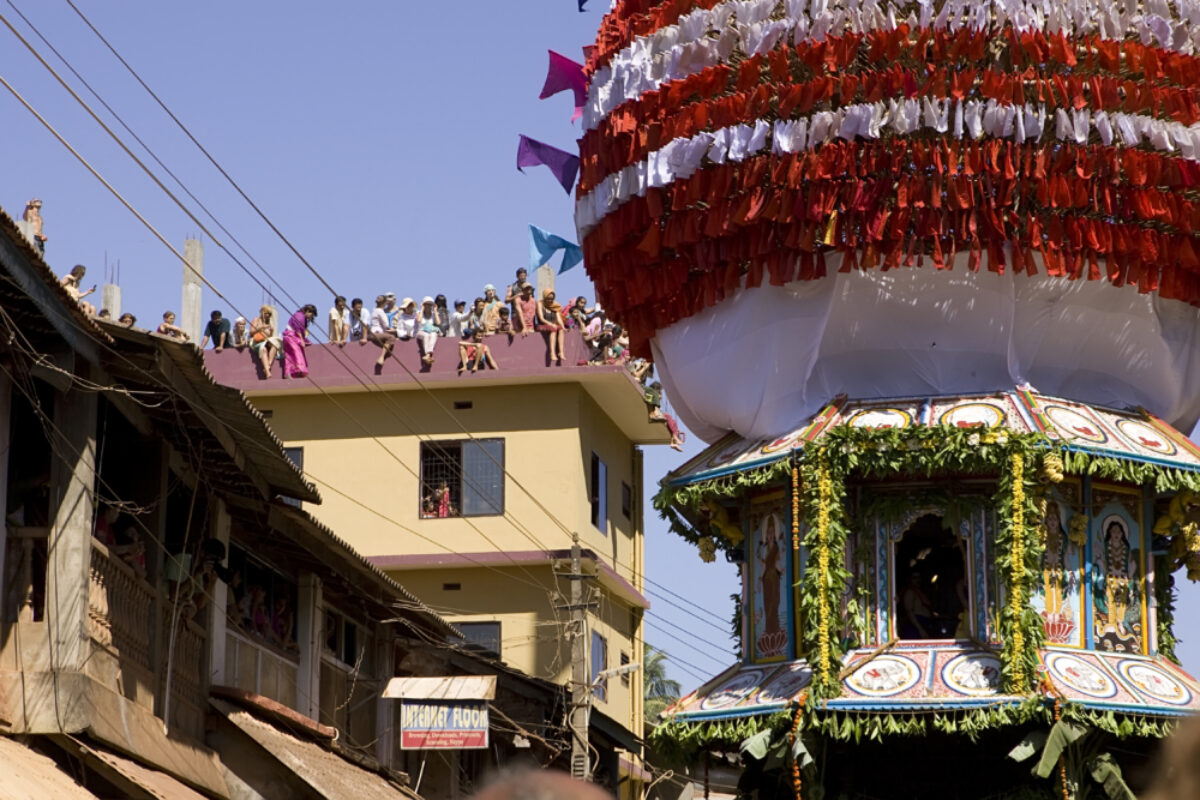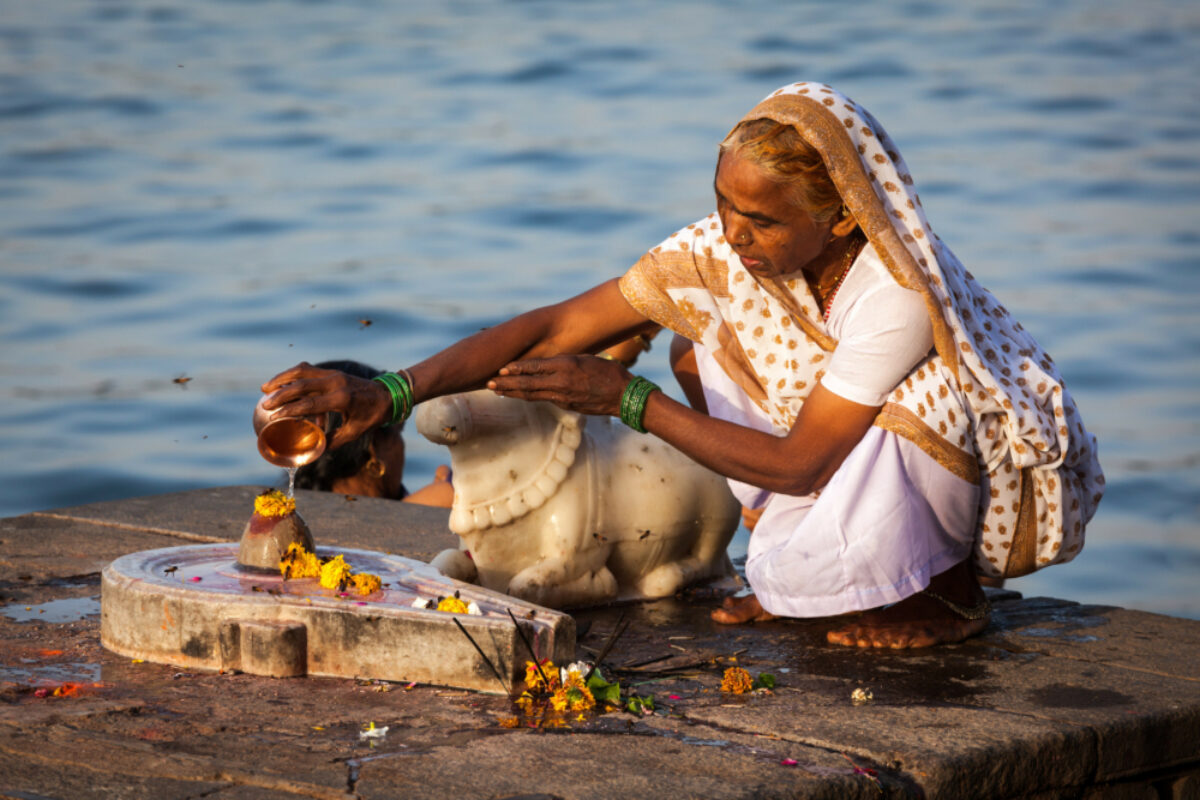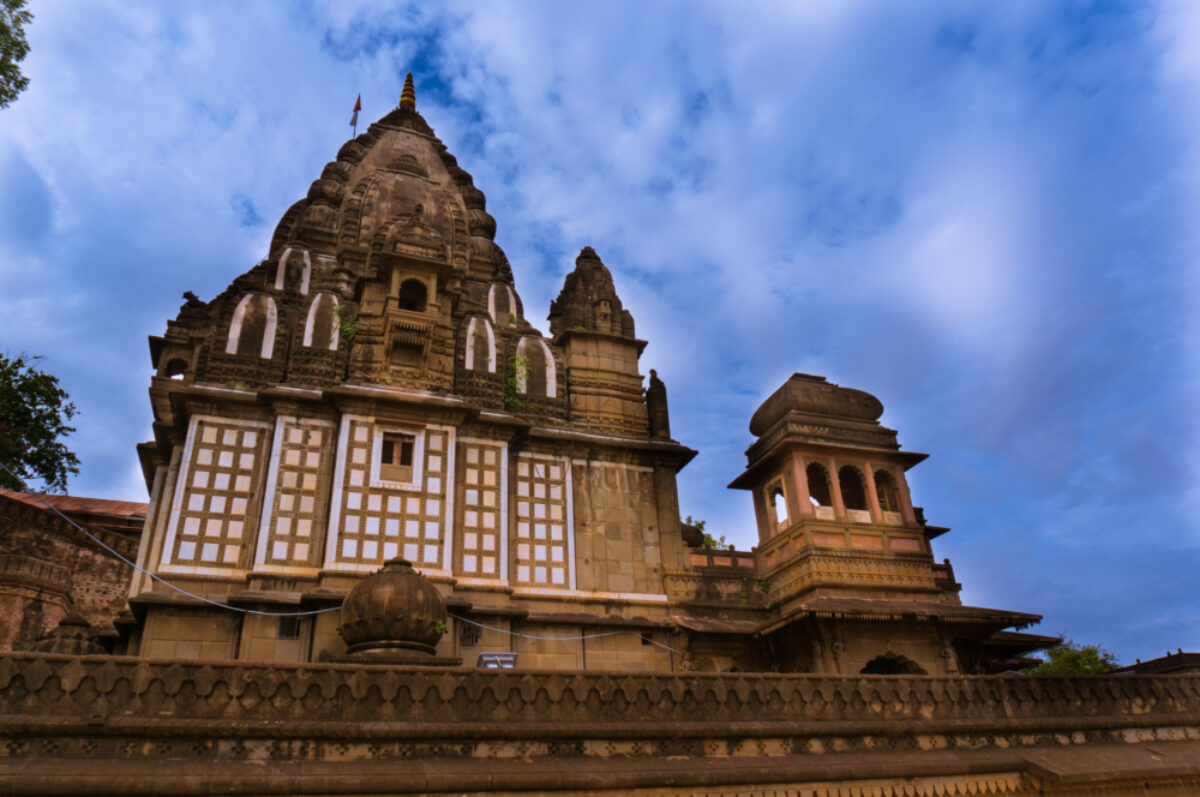How to visit the holy Indian town of Maheshwar
Exploring temple towns beyond Varanasi
The holy town of Maheshwar sits alongside the sacred Narmada River about two hours south of Indore in Madhya Pradesh. It is often referred to as the "Varanasi of Central India" because of the many temples and ghats that line the river. However, unlike the overwhelming assault on the senses that is Varanasi, Maheshwar is a calm, clean and compact town that's an evocative place to relax and be immersed in the divine atmosphere. The town's royal heritage and handloom weaving industry are additional attractions.

Why is Maheshwar a holy town?
Maheshwar's special spiritual significance comes from its association with Lord Shiva, the powerful Hindu god of destruction and transformation. The name Maheshwar means "abode of Mahesh". Hindus consider Mahesh to be a peaceful incarnation of Lord Shiva who blesses his devotees. They believe that Lord Shiva created the Narmada River and that he exists in the smooth cylindrical-shaped stones on the riverbed, called banalingas.
According to Hindu mythology, the Narmada River was born from sweat when Lord Shiva was meditating or performing the cosmic dance. Drops of sweat turned into a beautiful woman who dazzled the gods, and Lord Shiva named her Narmada (the "giver of pleasure"). The Narmada is the most sacred river in India – even more so than the iconic Ganges – and merely contemplating the river ensures salvation. What's more, when the Ganges River feels polluted, she's said to take on the form of a black cow and bathe in the Narmada to cleanse herself.
During the time of early Indian civilisation, Maheshwar is widely thought to have been the influential city of Mahishmati, as mentioned in the two major Hindu epics The Mahabharata and The Ramayana. Mahishmati was the capital of legendary king and warrior Kartavirya Arjuna (also known as Sahasrabahu and Sahasrarjun) who had 1,000 arms. Such was his strength, that he was able to effortlessly defeat 10-headed demon king Ravan in a duel and imprison him.
More recently, Maheshwar was revived in the late 18th century, when revered Maratha queen Ahilya Bai Holkar relocated her capital there from Indore to be close to Lord Shiva and the Narmada River. She rebuilt the landmark fort and added the palace, constructed many elegant temples, established the local weaving industry and turned Maheshwar into a prosperous town that was a centre for arts and culture. Her legacy visibly lives on today.

The Mahashivrati festival and pilgrimage
As one of the most hallowed places along the sacred Narmada River, Maheshwar is a popular pit stop on what's known as the Narmada Parikrama -- a formidable circumambulation of the river from its source to the sea and back. The return journey extends for about 2,600 kilometres. It's arduous but is believed to accelerate spiritual growth and self-awareness. Traditionally, pilgrims should walk barefooted next to the river, carrying a pot of water from the river and visiting as many temples as possible on the way. However, these days travel companies offer convenient 15-day package tours that halt at the major holy sites.
A less challenging way of experiencing the spiritual energy of Maheshwar and the Narmada River is to join pilgrims in celebrating the annual Mahashivratri festival. This "Great Night of Lord Shiva" falls on the eve of the new moon day in the month of Magh or Phalgun on the Hindu calendar, which is usually in February but sometimes occurs in early March. It's the darkest night of the month and, according to the sages of ancient India, the planets in the northern hemisphere are aligned in a way that generates an upsurge of energy at this time.
In particular, the immense power of Lord Shiva is said to be closest to earth on Mahashivratri. This power can be harnessed to destroy negativity accumulated throughout the year and propel spiritual awakening. Hence, devotees stay awake all night during the festival and worship the god.
There are many stories related to Mahashivratri in Hindu mythology. Some say it was the day that Lord Shiva married Goddess Parvati. Hence, the festival is especially auspicious for women, who pray for the wellbeing of their husbands (or to get an ideal husband like Lord Shiva if they're unmarried).
In Maheshwar, thousands of pilgrims come from surrounding villages to take a holy dip in the Narmada River, offer prayers at the town's many Shiva temples, and keep a nocturnal vigil by the riverside where they sing and chant Om Namah Shivaya.
It's a tumultuous and intoxicating night like no other.

Seeing Maheshwar's fort and temples
Maheshwar's attractions are concentrated around the expansive fort and palace complex, and the Narmada River that stretches out below it. The fort's current owner and occupant, Prince Richard Holkar (son of the last Maharaja), restored and converted part of it into the plush Ahilya Fort hotel in 2000 in order to preserve its heritage. Even if you're not staying at the fort, you can still see quite a lot inside it. As you pass through the busy modern-day market area and enter the fort through its lofty main gate, Ahilya Dwar, you'll be greeted by a sizeable statue of queen Ahilya Bai and transported back to the bygone era of the old walled city.
The key area of interest is Rajwada, the unobtrusive yet ornate royal court and residence made mostly of wood and set around a leafy central courtyard. It features a smattering of shrines and a museum with regal memorabilia including palanquins, weapons, photos, and Ahilya Bai's humble throne. In contrast to many other palaces in India, the Rajwada’s simplicity is striking. It reflects the queen's preference for the charitable construction of temples in northern India, rather than ostentatious displays of wealth. The most spectacular item is perhaps the small solid gold swing in her room of worship, on which she placed the deities.
A set of stairs leads down to a sprawling stone courtyard by the Narmada River where the cenotaph of Vithoji Rao Holkar is located. This younger brother of king Yashwant Rao Holkar I was executed by rivals in 1801, rather gruesomely by being trampled by elephants. The elaborate carvings on the cenotaph are exquisite. However, it's magnificent Ahilyeshwar temple that dominates the compound with its compelling fusion of Maratha and north Indian Nagara style architecture. It was made as a memorial for queen Ahilya Bai, and bhajans (devotional songs) are sung there every full moon.
From the courtyard, the fort's majestic Pani Darwaza (Water Gate) opens out onto the ghats and river -- the spiritual heart of Maheshwar. One of the best things to do is sedately stroll along the paved riverfront and soak up the atmosphere. It's fascinating to watch the play of daily life as people pray, chant, bathe, wash clothes, and even do yoga.

Left of Pani Darwaza is the white-washed Kashi Vishwanath temple, constructed by Ahilya Bai to provide shelter for wandering holy men. It's a smaller replica of the famous temple of the same name in Varanasi, which she rebuilt in 1780. The Maheshwar version is delightfully quiet and un-commercialised, making it an inviting place to sit and gaze across the Narmada River.
Nearby, along a stone path that leads up to the fort, is the Raj Rajeshwar Sahasrarjun temple complex. It pays homage to King Kartavirya Arjuna and his battle with Ravan and has 11 eternally burning holy lamps.
Heading right of Pani Darwaza will take you to busier Mahila Ghat where there is a cenotaph and temple dedicated to Krishna Bai, the wife of Holkar king Yashwant Rao I. Further on are two more cenotaphs -- one for Ahilya Bai's daughter Mukta Bai and the other for her husband Yashwantrao Phanse. Sadly, Mukta Bai committed sati (self-immolation) after her husband died from cholera in 1791. The place where Ahilya Bai was cremated is next to the river as well.
The riverfront is particularly magical around dusk. Before sunset, take a boat out to Baneshwar temple in the middle of the river. Intriguingly, local folklore considers it to be the centre of the universe. The view of the golden-hued fort, ghats and temples from the river is captivating. As the sun disappears, the ghats come alive with the uplifting evening aarti ceremonies and glow of lamps. Early risers will be rewarded with aartis, sacred chants, and clanging temple bells at dawn as well.
The Holkar family continues queen Ahilya Bai's tradition of holding a morning Lingarchan Puja for the wellbeing of the public, whereby Hindu priests make thousands of miniature Shiva lingas (representations of Lord Shiva) out of mud from the Narmada River and recite prayers over them. This unique ritual takes place daily from 8.30 a.m. in the fort and is memorable to attend.
While at the fort, drop by the Rehwa Society to admire weavers at work. This organisation was set up by the Holkar family to aid the weavers of Maheshwar, who produce distinctive handloom saris based on the 300-year-old designs of queen Ahilya Bai. These refined and graceful saris are brightly embellished with zari (gold thread) striping or brocade. Many shops sell them in the town's market area.




